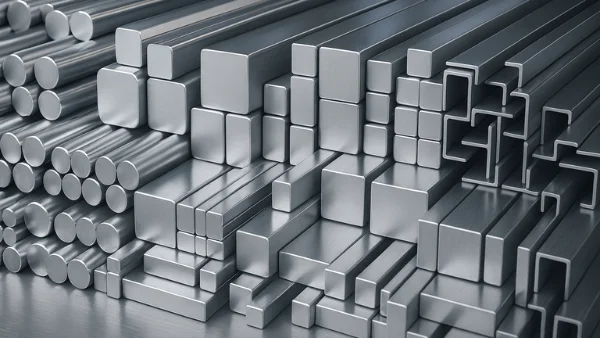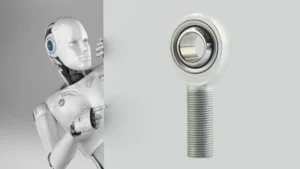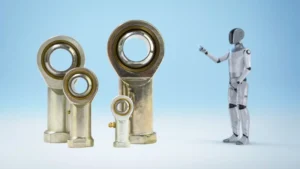In the world of CNC machining, precision and appearance often grab the spotlight, but the real factors that determine a part’s lifespan, performance, and cost lie in one critical decision—selecting the right cnc machining parts materials. Use the wrong material, and even the most precisely machined part might last only a few months. Choose the right one, and it can deliver reliable performance while reducing maintenance and replacement costs.
For industry buyers and procurement engineers, cnc machining parts materials is not just about picking a metal type—it’s about balancing strength, hardness, corrosion resistance, machinability, and even compatibility with heat treatments and surface finishes. For modification enthusiasts, material selection is about tailoring performance to the specific needs of a part—aluminum, steel, copper, titanium—each comes with its own personality and ideal application scenarios.
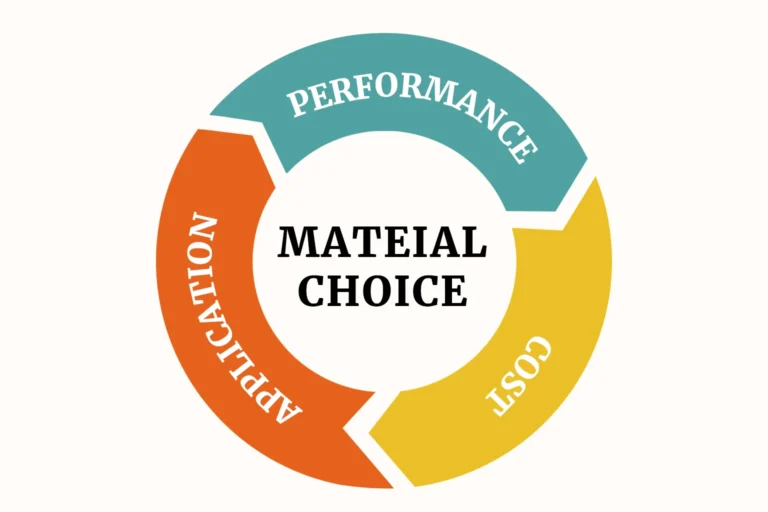
In this guide, we’ll take a systematic look at the strengths and weaknesses of common CNC machining materials, their typical applications, key purchasing considerations, and machining tips. Whether you’re sourcing aerospace-grade aluminum alloys or looking for wear-resistant steel for high-load equipment, this article will help you make more informed and efficient decisions.
Overview of Common CNC Machining Parts Materials
CNC machining can work with a wide range of metals, but when it comes to selecting the right material, it’s helpful to group them based on their composition and performance characteristics. Each category offers unique strengths, limitations, and ideal application scenarios.
| Material Category | Representative Materials | Key Properties | Common Applications |
|---|---|---|---|
| Ferrous Metals | Carbon steel (Q235, 45#), alloy steel (4140, 4340), cast iron (QT400) | High strength, impact resistance, cost-effective, good machinability | Structural components, shafts, gears, machine tool bases |
| Stainless Steels | 304, 316, 440C, 17-4PH | Corrosion resistance, heat resistance, some grades can be hardened | Food machinery, medical devices, marine parts, cutting tools |
| Non-Ferrous Metals | Aluminum alloys (5052, 6061, 7075), copper alloys (brass, bronze) | Lightweight, high thermal conductivity, corrosion resistance, aesthetic appeal | Aerospace parts, heat exchangers, decorative components, electrical conductors |
| Special Metals | Titanium alloys, magnesium alloys, high-temperature alloys | Ultra-high strength, withstand extreme environments, low weight | Aerospace, medical implants, motorsports components |
Ferrous Metals (Black Metals)
Ferrous metals are among the most widely used cnc machining parts materials. Primarily composed of iron, they are often alloyed with carbon, manganese, chromium, and other elements to enhance performance. Known for their high strength, impact resistance, cost-effectiveness, and good machinability, ferrous metals are commonly used for structural components, transmission parts, and load-bearing applications. They include three main categories: carbon steel, alloy steel, and cast iron.
Carbon Steel
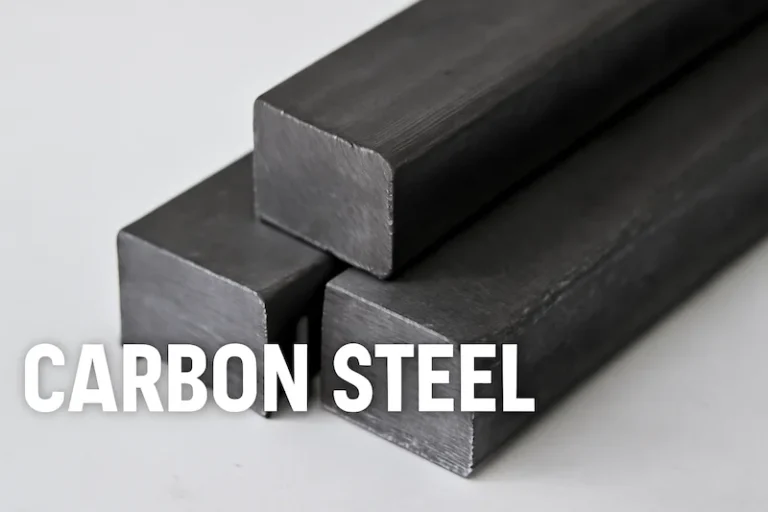
Carbon steel can be divided into ordinary carbon steel and quality carbon steel, depending on purity and performance.
Ordinary carbon steel (e.g., Q235, Q345)
Carbon content below 0.3%, good ductility and weldability, low cost, suitable for structural parts, bolts, and brackets where high strength is not critical.
Quality carbon steel (e.g., 20#, 45#, 65Mn)
Low carbon steel (1018, 20#): Ideal for stamped or welded parts
Medium carbon steel (1045): Higher strength and hardness, used for connecting rods, crankshafts, gears
High carbon steel (65Mn): Spring steel with good wear resistance and elasticity
Buyer’s tip: Carbon steel offers a clear price advantage and is widely available in standard grades. However, its corrosion resistance is limited, so additional surface protection is needed in humid or corrosive environments.
Alloy Steel
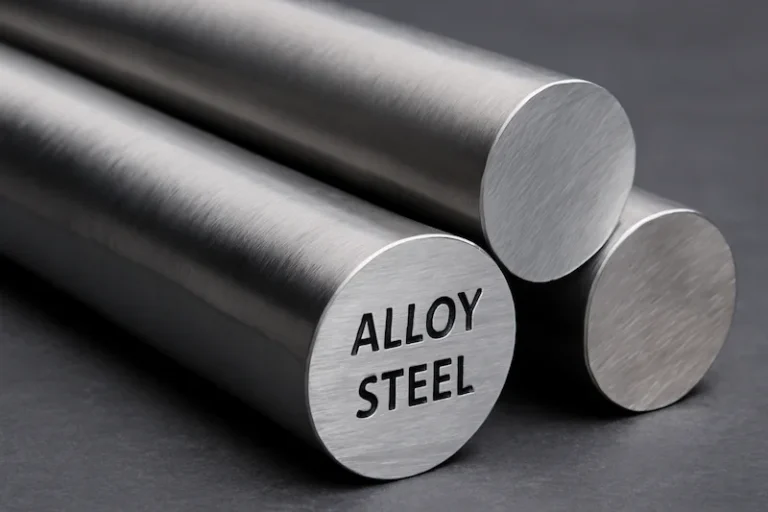
Alloy steel adds elements such as chromium, nickel, and molybdenum to carbon steel to improve strength, toughness, wear resistance, and corrosion resistance. Common types include:
- Medium-strength alloy structural steel: 4130, 4135 (30CrMo, 35CrMo) – Balanced strength and toughness, used for drive shafts, crankshafts, gears
- High-strength alloy structural steel: 4140 (42CrMo), 4340 (40CrNiMoA) – Excellent fatigue resistance for high-load components
- Ultra-high-strength steel: 300M (4340M) – Used in aircraft landing gear and motorsport suspension parts
- Carburizing steels (gear steels): 20CrNiMo (8620), 20CrMnTi – Hard surface, tough core, common in gears and shafts
- Quenched and tempered steel: 40Cr – Versatile performance, more affordable than high-nickel steels
Buyer’s tip: Alloy steel offers strong value in high-strength, wear-resistant applications, but grade selection should be based on specific mechanical requirements and heat treatment plans.
Cast Iron
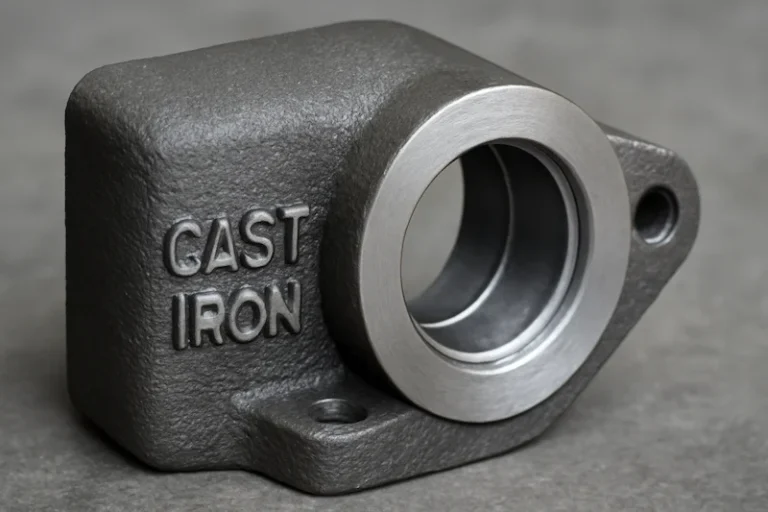
In CNC machining, ductile iron (QT400 series) is the most common type. It combines high strength, hardness, and wear resistance with decent toughness, making it suitable for machine tool bases, gearboxes, housings, and engine blocks where vibration damping and dimensional stability are important.
Buyer’s tip: Cast iron excels in compressive strength but has lower tensile strength, making it unsuitable for high-impact or high-tensile-load conditions.
Performance and Application Comparison
| Material Type | Typical Grades | Strength | Hardness | Toughness | Corrosion Resistance | Common Applications |
|---|---|---|---|---|---|---|
| Ordinary Carbon Steel | Q235, Q345 | Medium | Medium | High | Low | Structural parts, bolts, brackets |
| Quality Carbon Steel | 20#, 45#, 65Mn | High | High | Medium | Low | Gears, connecting rods, springs |
| Alloy Steel | 4130, 4140, 4340 | High | High | High | Medium | Drive shafts, crankshafts, gears |
| Cast Iron | QT400 series | Medium | High | Medium | Medium | Machine tool bases, gearboxes |
Stainless Steels in CNC Machining
Stainless steels are an essential group of cnc machining parts materials, valued for their excellent corrosion resistance, high-temperature stability, and reliable strength. They are widely used in food machinery, medical devices, marine engineering, and high-end industrial applications. In the international classification system, stainless steels are typically grouped into three main categories: Austenitic, Martensitic, and Precipitation Hardening.
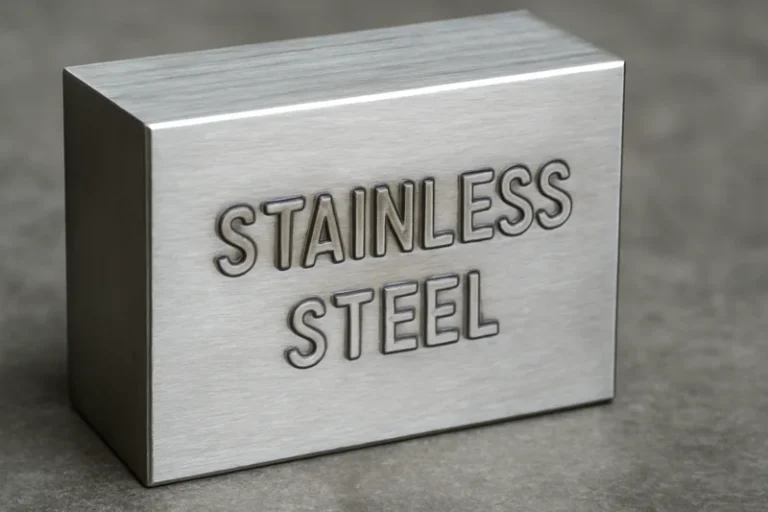
Austenitic Stainless Steels
Typical Grades: 304, 316
304: Known as 18/8 stainless steel, offering good corrosion resistance, high toughness, and excellent machinability. It is the most widely used general-purpose stainless steel.
316: Known as 18/10 stainless steel, contains molybdenum for improved corrosion resistance, especially in chloride-rich environments like seawater, and better structural stability at high temperatures.
Applications: Food processing equipment, medical instruments, chemical pipelines, marine fittings.
Buyer’s tip: 304 is more cost-effective for general environments, while 316 offers better value in marine or highly corrosive settings.
Martensitic Stainless Steels
Typical Grades: 440A, 440B, 440C
The 440 series is well-known for its high hardness and wear resistance. Among them, 440C has the highest carbon content, achieving hardness up to HRC 55–60, but with slightly lower corrosion resistance than austenitic grades.
Applications: Cutting tools, bearing components, valves, precision gauges.
Buyer’s tip: Martensitic stainless steels can be heat-treated for very high hardness, but they have lower toughness and are best for wear-resistant applications with lower impact loads.
Precipitation Hardening Stainless Steels
Typical Grade: 17-4PH
Combines high strength, good hardness, and excellent corrosion resistance. Properties can be further enhanced through aging heat treatments.
Applications: Aerospace components, marine fasteners, critical parts for medical devices.
Buyer’s tip: 17-4PH is ideal when both high strength and corrosion resistance are required, but it demands precise heat treatment and machining expertise.
Performance and Application Comparison
| Material Type | Typical Grades | Strength | Hardness | Corrosion Resistance | Machinability | Common Applications |
|---|---|---|---|---|---|---|
| Austenitic Stainless Steel | 304, 316 | Medium | Medium | High | Excellent | Food machinery, medical devices, chemical equipment |
| Martensitic Stainless Steel | 440A, 440B, 440C | High | High | Medium | Moderate | Cutting tools, bearings, valves |
| Precipitation Hardening Stainless Steel | 17-4PH | High | Medium-High | High | Good | Aerospace parts, marine engineering, precision components |
Non-Ferrous Metals in CNC Machining
Non-ferrous metals form an important category of cnc machining parts materials, covering aluminum, copper, titanium, and their alloys. They are valued for being lightweight, corrosion-resistant, and offering excellent thermal and electrical conductivity—as well as their aesthetic appeal. Because of these properties, they are widely used in aerospace, electronics, automotive, marine, and high-end decorative components.
Aluminum Alloys
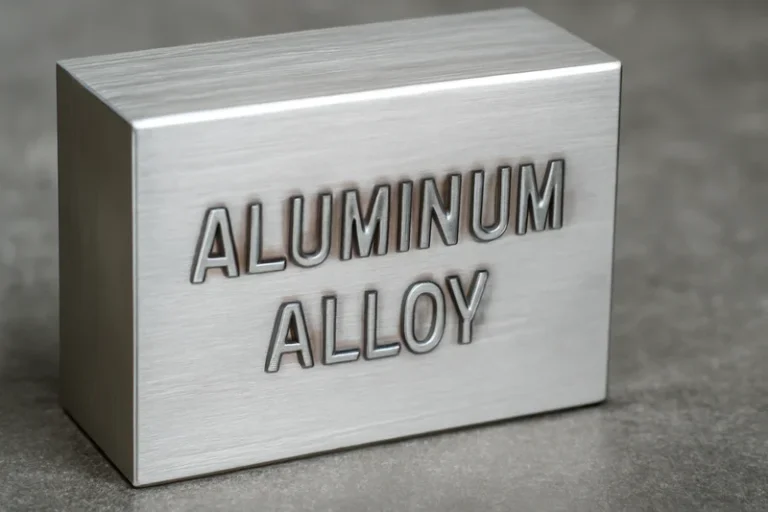
Aluminum alloys are among the most common non-ferrous materials used in CNC machining. They can be divided into heat-treatable alloys (e.g., 6061, 7075) and non-heat-treatable alloys (e.g., 5052).
- 5052: Excellent corrosion resistance and formability, ideal for containers, decorative parts, and low-load structural components. Cannot be strengthened by heat treatment—usually hardened through work hardening.
- 6061-T6: Well-balanced mechanical properties, high strength, good machinability, and excellent weldability. Common in structural parts, mechanical components, and automotive parts.
- 7075-T6: High-strength aluminum alloy with outstanding mechanical performance but lower weldability and corrosion resistance compared to 5052 and 6061. Frequently used in aerospace and high-load mechanical parts.
Buyer’s tip: 5052 is the most cost-effective with superior corrosion resistance, ideal for outdoor or marine environments. 6061 is the most versatile structural aluminum. 7075 is expensive but unbeatable in high-strength applications.
Copper and Copper Alloys
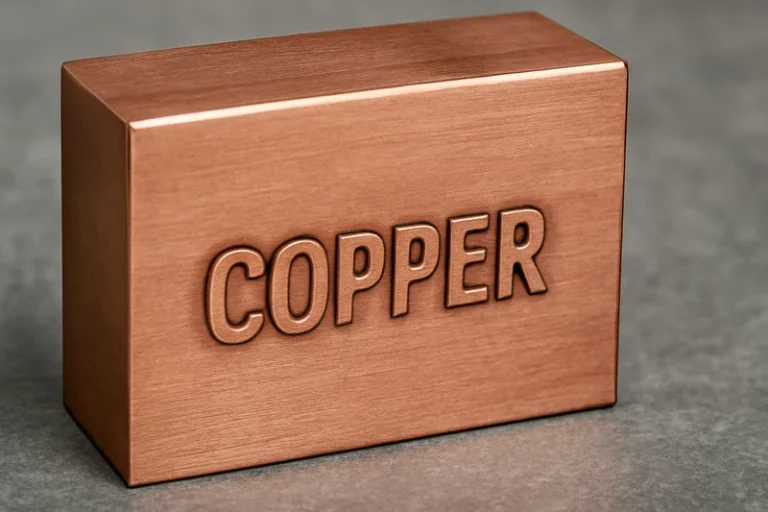
Copper-based alloys excel in electrical and thermal conductivity, corrosion resistance, and wear resistance, making them ideal for functional components and premium decorative parts in CNC machining.
- Pure Copper: Exceptional electrical and thermal conductivity, used in electrical components and heat exchangers.
- Brass (H59, H58): Good mechanical properties, wear resistance, and machinability, often used in valves, fittings, and hardware.
- Bronze (C93200, C863): Excellent wear and corrosion resistance, suitable for bearings, bushings, and gears under heavy loads.
- Nickel Silver (Copper-Nickel Alloys): High corrosion resistance and attractive silver-white appearance, used in marine fittings and precision instruments.
Buyer’s tip: When selecting copper alloys, determine whether the priority is functional performance (e.g., conductivity) or structural performance (e.g., wear resistance), as different compositions vary greatly in cost.
Titanium and Titanium Alloys
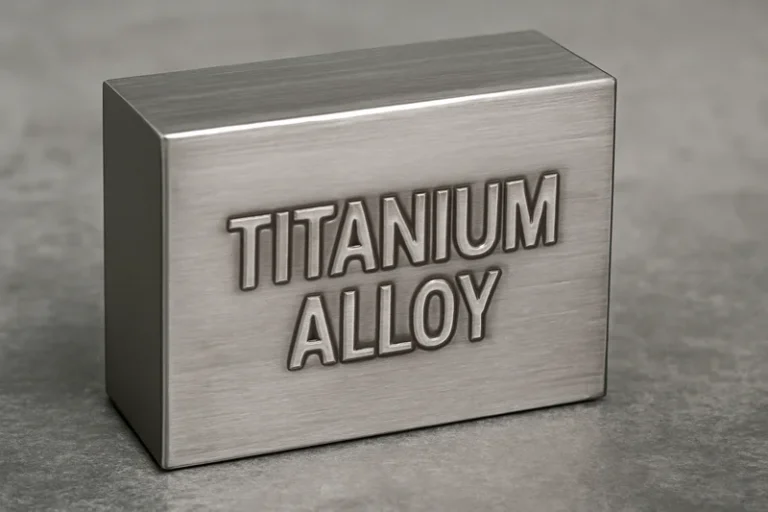
Titanium alloys are known for their high strength-to-weight ratio, outstanding corrosion resistance, and low density, making them a top choice in aerospace, medical implants, and high-end sporting equipment.
A common grade is Ti-6Al-4V (TC4), which offers excellent strength and seawater resistance but is difficult to machine and causes significant tool wear.
Buyer’s tip: Titanium alloys are expensive and costly to machine, making them best suited for parts where weight, strength, and corrosion resistance are critical.
Performance and Application Comparison
| Material Type | Typical Grades | Strength | Corrosion Resistance | Machinability | Weight | Common Applications |
|---|---|---|---|---|---|---|
| Aluminum Alloys | 5052, 6061, 7075 | Medium–High | High | Excellent–Good | Light | Aerospace parts, structural components, decorative items |
| Copper & Copper Alloys | Pure Copper, H59, C93200 | Medium | High | Excellent | Medium | Electrical components, valves, bearings |
| Titanium Alloys | Ti-6Al-4V | High | High | Moderate | Light | Aerospace parts, medical implants |
How to Select the Right CNC Machining Material
In any CNC machining project, the choice of material can directly determine a part’s performance, lifespan, machining efficiency, and overall cost. Among all cnc machining parts materials, each option comes with its own strengths in strength, hardness, corrosion resistance, machinability, and weight. When making a selection, it’s essential to evaluate performance requirements, operating environment, budget, and manufacturing conditions together.
Selecting by Performance Requirements
High strength and wear resistance: Best for high-load, long-life components such as alloy steels (4140, 4340), high-strength aluminum alloys (7075), and titanium alloys (Ti-6Al-4V).
Corrosion resistance priority: For marine, chemical, or outdoor environments, consider stainless steels (316, 17-4PH), aluminum alloys (5052, 6061), and copper-nickel alloys.
Weight-sensitive applications: In aerospace, UAVs, or sporting goods, aluminum alloys or titanium alloys help achieve weight reduction without sacrificing strength.
Buyer’s tip: Identify the key performance indicators (e.g., tensile strength, hardness, corrosion resistance rating) for your product and rank them by importance based on the application.
Selecting by Industry Application
Aerospace: Often uses high-strength, lightweight materials such as 7075 aluminum, titanium alloys, and 17-4PH stainless steel.
Automotive & Machinery: Common choices include alloy steel, carbon steel, and 6061 aluminum alloy.
Marine & Chemical: Focus on corrosion-resistant materials such as 316 stainless steel, copper-nickel alloys, and 5052 aluminum.
Medical Devices: Require corrosion resistance and biocompatibility, with 316L stainless steel and titanium alloys being common.
Buyer’s tip: Each industry has its own certification and standards for materials (e.g., ASTM, ISO). Confirm compliance before purchasing.
Balancing Cost and Machinability
High-performance materials often come with higher purchase and machining costs (e.g., titanium alloys, 17-4PH stainless steel).
If performance requirements allow, choosing materials with better machinability (e.g., 6061 aluminum alloy, Q235 carbon steel) can significantly reduce production costs and lead times.
Complex geometry parts should favor materials with good cutting properties to minimize tool wear and machining time.
Buyer’s tip: Discuss part geometry and machining requirements with your manufacturer during the sourcing stage to avoid choosing materials that result in excessive machining costs.
Material Selection Decision Guide
A simple decision-making process can streamline material selection:
- Identify the operating environment and performance requirements of the part
- Narrow down materials that meet those conditions
- Evaluate cost, machinability, and lead time for each option
- Finalize material choice and conduct sample verification
Visual suggestion: Include a “Material Selection Decision Tree” infographic to help readers quickly navigate to the most suitable material option.
Machining Tips for Different Materials
Different cnc machining parts materials behave differently when it comes to cutting performance, heat treatment, and surface finishing. Understanding these characteristics not only improves machining efficiency but also extends tool life and ensures that the final part meets its design requirements.
Tooling and Cutting Parameter Selection
Carbon and Alloy Steels
Use high-speed steel (HSS) or carbide tools. For high-strength alloy steels, coated carbide tools (e.g., TiAlN coating) help extend tool life. Maintain moderate cutting speeds to avoid excessive heat that can soften tools.
Stainless Steels
Austenitic grades like 304 and 316 have poor thermal conductivity, generating high heat during cutting—use sharp tools, lower cutting speeds, and abundant coolant. Martensitic and precipitation-hardening stainless steels are harder, requiring wear-resistant tooling and controlled feed rates.
Aluminum Alloys
Offer low cutting resistance and can be machined at high speeds. Use sharp carbide tools and avoid built-up edge formation.
Copper Alloys
Conduct heat well and cut smoothly, but soft brasses can stick to tools—keep tool edges sharp and control cutting speed.
Titanium Alloys
Poor thermal conductivity and tendency to gall require dedicated titanium-grade tooling, low cutting speeds, and high-pressure coolant.
Heat Treatment Considerations
High-strength alloy steels can be annealed before machining to reduce hardness and improve machinability, then quenched and tempered afterward.
Carburizing steels and precipitation-hardening stainless steels should receive final heat treatment after machining to ensure surface hardness and internal toughness.
Aluminum alloys in T6 or T651 condition should maintain their heat-treated state until final machining for maximum strength and dimensional stability.
Surface Finishing Recommendations
Steels: Common finishes include zinc plating, nickel plating, black oxide, or painting for corrosion protection.
Stainless Steels: Often polished or passivated to enhance corrosion resistance.
Aluminum Alloys: Anodizing improves corrosion resistance and aesthetics; hard anodizing suits high-wear applications.
Copper Alloys: Nickel plating or clear coating helps prevent tarnishing.
Titanium Alloys: Common finishes include sandblasting, polishing, or specialized oxidation treatments.
Machining and Finishing Reference Table
| Material Type | Recommended Tooling | Cutting Speed | Cooling Method | Common Finishes |
|---|---|---|---|---|
| Carbon / Alloy Steels | HSS / Carbide (TiAlN Coated) | Medium | Emulsion Coolant | Zinc plating, black oxide, painting |
| Stainless Steels | Carbide Tools | Low | Abundant Coolant | Polishing, passivation |
| Aluminum Alloys | Sharp Carbide Tools | High | Mist / Air Cooling | Anodizing |
| Copper Alloys | Carbide Tools | Medium–High | Water-Based Coolant | Nickel plating, clear coating |
| Titanium Alloys | Titanium-Specific Tooling | Low | High-Pressure Coolant | Sandblasting, oxidation |
Choosing the Right CNC Machining Material, Not the Best
In CNC machining projects, material selection is never just a technical decision—it’s a careful balance of performance, cost, machinability, and supply chain considerations. Different cnc machining parts materials vary in strength, corrosion resistance, weight, and ease of machining, which determines their suitability across industries.
Whether you’re an industry buyer, procurement engineer, or modification enthusiast, understanding material properties and application scenarios allows you to make choices with greater confidence.
For lightweight strength, aluminum alloys and titanium alloys are natural contenders.
When corrosion resistance is the top priority, stainless steels and certain copper alloys stand out.
For cost efficiency and easy machining, carbon steels and selected alloy steels remain reliable options.
By applying the comparisons, application tips, and machining insights shared in this guide, you can quickly narrow your options and strike the right balance between performance and cost. Remember—material selection is not a one-time decision, but an evolving process. As technology, market conditions, and requirements change, so too will the “right” material choice.
Beyond general machining materials, buyers need to understand heim joint materials and finishes. See the bigger picture in our Buyers’ Guide to Heim Joints.


